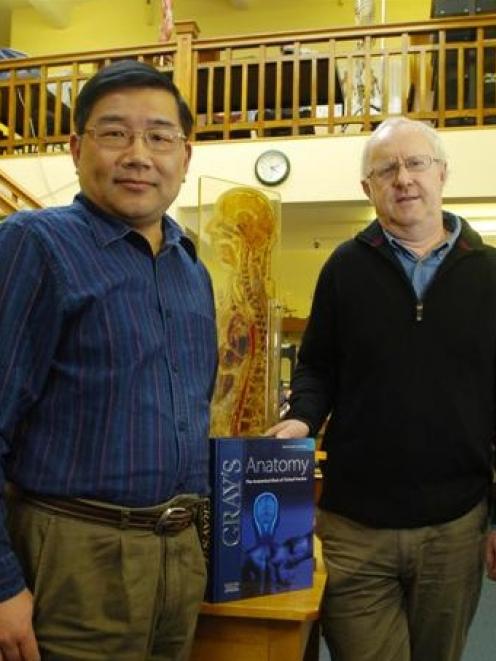
Clinical anatomist Dr Ming Zhang (50), of the university's anatomy and structural biology department, and the department's medical artist, Robbie McPhee, have provided the section on the cervical fascia, a structure within the neck.
"I was very, very excited,'' Dr Zhang said, recalling when he was contacted about his research two years ago by the book's English-based editor-in-chief, Susan Standring.
Mr McPhee was also "pretty chuffed'' when he realised two diagrams he had created would be appearing in the section written by Dr Zhang.
Dr Zhang said contributing to the 40th edition of the world's most famous textbook was a highlight of his career and a most pleasing outcome.
It had previously been difficult to attract external funding for some of his research, but the anatomy department, including two previous heads, Prof Gareth Jones and Prof Helen Nicholson, had been "very, very supportive''.
The research, which had appeared in several high-profile journals, was made possible through the world-leading techniques and facilities developed at the department over many years.
"The department's excellent plastination and confocal microscopy facilities allowed us to closely observe and describe the structures right down to the cellular level,'' he said.
Plastination involves preserving body parts by replacing water and fats with plastics and resins in a way that retains the detailed properties of the original sample.
His team's findings on the cervical fascia have helped resolve the debate about the depth required for local anaesthetic injections in neck surgery, such as removing plaques in carotid arteries.
By showing that a particular structure previously thought to exist, in fact, did not, the researchers also showed that only skin-deep injections were required, avoiding risks caused by going in further.
Other research by his team has helped clarify how endoscopes, types of medical instruments, could be safely used to examine lymph nodes deep within the neck and has also shed new light on headaches generated from neck tissues.
The textbook's new edition is due to be published later this year.
